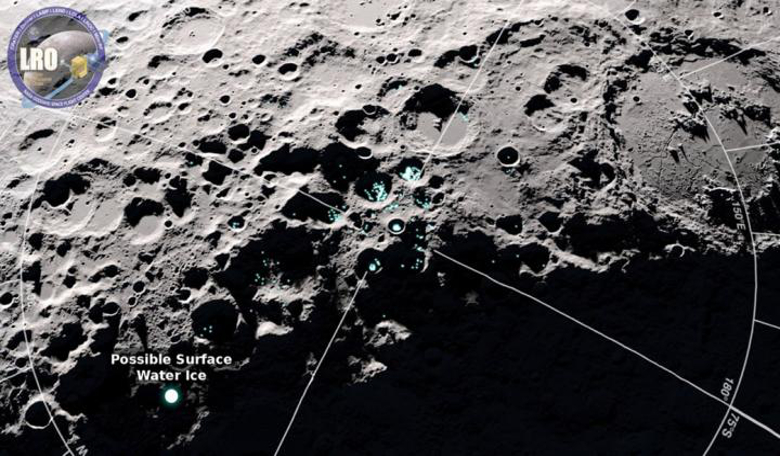With the US pushing a ‘Back to the Moon” exploration campaign but this time with an emphasis on a more permanent presence, it might be of some comfort for any long-term lunar settlers to know that our celestial neighbour is not completely arid as once thought but has in fact its own water cycle; not one comparable to Earth, but a very small one nonetheless.
Up until the last decade or so, scientists thought that the only water on the Moon was confined to small pockets of ice hidden away in permanently dark and shaded craters near the poles.
However by using a UV spectrograph, known as the Lyman Alpha Mapping Project (LAMP) instrument, on NASA's Lunar Reconnaissance Orbiter (LRO), a team of scientists have observed water molecules ‘hopping’ around the dayside of the Moon.
The sparse layer of water molecules is more common at higher latitudes and temporarily sticks to the layer of loose regolith that coats the lunar surface, but once the temperature begins to hot up around local noon time, then the molecules thermally desorb and 'bounce' to a nearby location.
The migrating molecules are not confined to a new locale on the surface either. Instead of finding a cool spot on the ground to gather in, they can also cling to the Moon's extremely tenuous atmosphere or exosphere and trickle back down when temperatures start dropping.
"This is an important new result about lunar water, a hot topic as our nation's space program returns to a focus on lunar exploration," said Dr. Kurt Retherford, the principal investigator of the LAMP instrument from Southwest Research Institute in San Antonio, Texas.
Finding enough freely available water on the lunar surface would be advantageous to any future Moon missions as it means it would not have to be carried from Earth, therefore making these trips more affordable.
"These results aid in understanding the lunar water cycle and will ultimately help us learn about accessibility of water that can be used by humans in future missions to the Moon," said Amanda Hendrix, a senior scientist at the Planetary Science Institute and lead author of the paper.
It was thought that the source of most of the Moon's surface water came from hydrogen ions in the solar wind, and as such, this thin veneer of water droplets would dissipate completely when the Moon passed behind the Earth and is shielded from the solar wind.
However the new data from LAMP shows that this is not the case and instead water builds up over time, rather than "rain" down directly from the solar wind.
"Lunar hydration is tricky to measure from orbit, due to the complex way that light reflects off of the lunar surface," said Michael Poston, a research scientist on the LAMP team who has previously conducted extensive experiments with water and lunar samples collected by the Apollo missions.
The research has paid off however as this new data is currently the only set of measurements providing daytime coverage of the Moon’s hydration cycle and it is the first time that the UV absorption signature of H2O has been used to detect water on a rocky, airless body.
"Previous research reported quantities of hopping water molecules that were too large to explain with known physical processes. I'm excited about these latest results because the amount of water interpreted here is consistent with what lab measurements indicate is possible,” Poston said.











